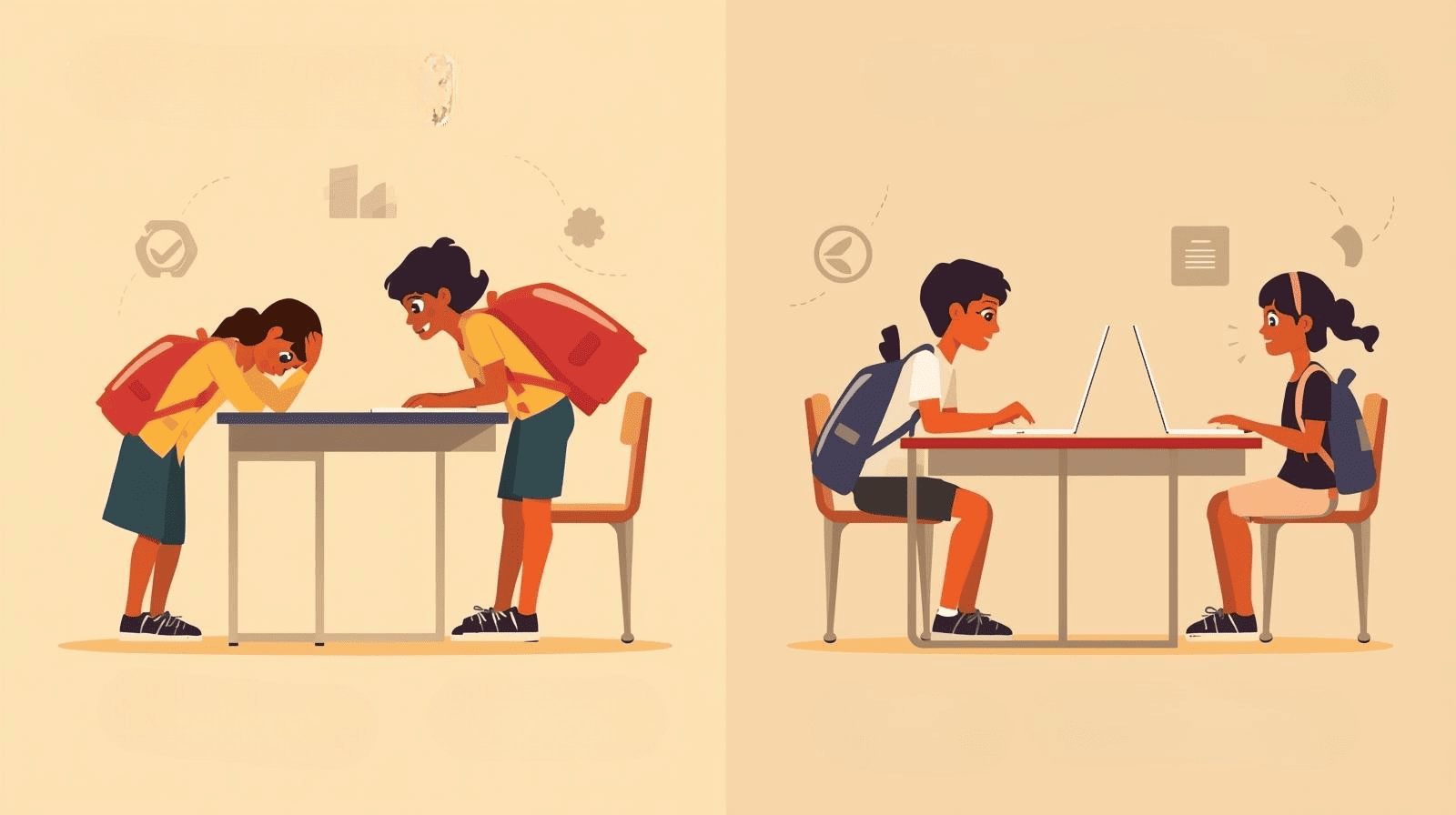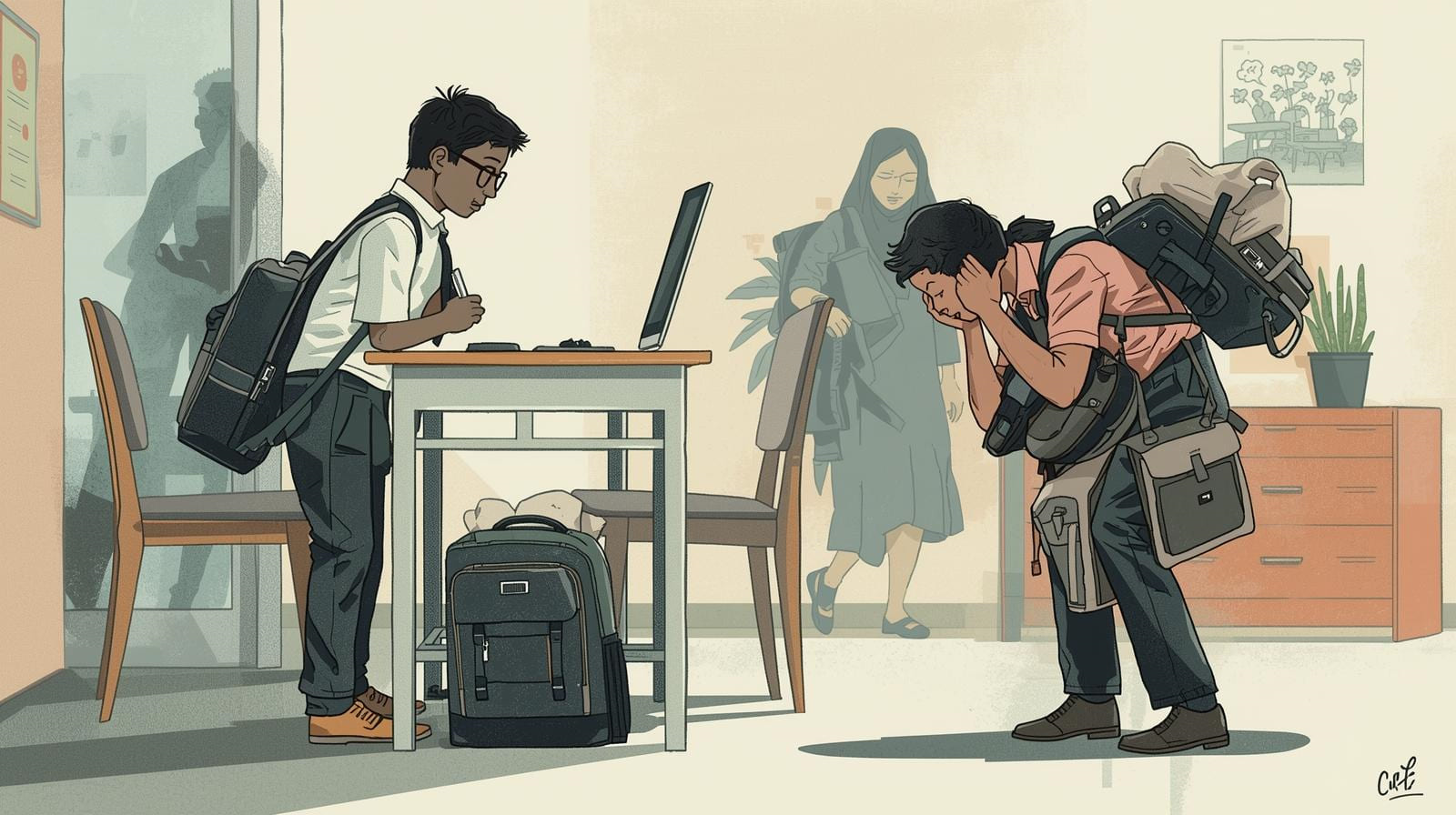
 by Admin
by Admin
 27 Aug, 2025
27 Aug, 2025
A Healthier Way to Learn: Simple Steps to Improve Ergonomics for Students in India
The challenges students face today go beyond heavy homework and long school hours. Many are silently struggling with musculoskeletal disorders (MSDs) and digital eye strain (DES)—problems that stem from poor ergonomics in classrooms and at home. The good news? These issues are largely preventable. With simple, consistent adjustments, we can reduce risks and help children learn in healthier, more supportive environments.
1. Optimize the Workstation and Study Space
How a child sits and studies matters more than we think. Poor setups force bad posture, which can turn into long-term problems.
- Chair & Desk Fit: Elbows should rest comfortably at a 90° angle. Feet should touch the floor with knees bent at 90°. If a chair is too high, add a footrest or cushion.
- Screen Position: Place screens at or slightly below eye level, about an arm’s length away. For laptops, a stand (or even a stack of books) helps bring the screen up.
- Lighting: Study areas should be well lit with minimal glare. Natural light is best, but adjustable desk lamps also work well.
2. Backpack Safety
Backpacks are one of the biggest contributors to back and neck pain in children.
- Weight Rule: A bag should weigh no more than 10–15% of the child’s body weight.
- Two Straps, Always: Using both shoulder straps distributes the load evenly.
- Snug Fit: The backpack should sit close to the back, not dangling low.
- Smart Packing: Heaviest books should be placed closest to the spine.
3. Digital Device Usage and Eye Protection
Screen time is here to stay—but the strain can be reduced.
- 20-20-20 Rule: Every 20 minutes, look at something 20 feet away for 20 seconds.
- Blue Light Filters: Enable blue light settings on devices or use screen filters.
- Frequent Breaks: Encourage kids to stretch or move every 30–40 minutes. This helps both the eyes and the body.
4. Awareness and Education
Ultimately, knowledge makes the biggest difference.
- Teach the Basics: Schools can integrate lessons on posture, body mechanics, and backpack safety into the curriculum.
- Awareness Campaigns: Parents and educators can collaborate to spread the word about ergonomics.
- Lead by Example: Adults who sit upright, take breaks, and practice screen hygiene show children how it’s done.
What to Look For in Supportive Products
Investing in the right tools helps students stick to healthier habits:
- Chairs: Adjustable, cushioned, with lumbar support.
- Desks: Sized to the student’s body, allowing elbows to rest comfortably.
- Backpacks: Wide padded straps, multiple compartments, cushioned back, and if possible, waist/chest straps.
- Laptop/Tablet Stands: Adjustable height and tilt.
- Lighting: Adjustable desk lamps with warm tones to reduce glare.
- Screen Filters: Anti-glare and blue light protection.
The Takeaway
Ergonomic problems are not an inevitable part of school life. By making small but important changes—lighter bags, better desks, smarter screen habits, and more awareness—we can protect students from avoidable pain and set them up for healthier, more focused learning.
Healthy students are better learners. Tackling these silent challenges today ensures we’re not raising a generation burdened by chronic pain tomorrow.
Disclaimer
This article is for educational and awareness purposes only. All recommendations are based on commonly accepted ergonomic guidelines and peer-reviewed research in public health and pediatric studies. If a student is experiencing ongoing pain, discomfort, or vision problems, consult a qualified medical professional for diagnosis and treatment.
Search
Recent Post

 16 Oct, 2025
16 Oct, 2025
Corporate Wellness: The New Workplace Priority

 12 Oct, 2025
12 Oct, 2025
What’s Really Inside Your Food Packet?

 02 Jul, 2025
02 Jul, 2025
Is Your Air & Water Making You Sick?

 14 Jun, 2025
14 Jun, 2025
















